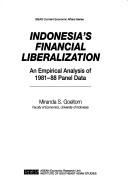| Listing 1 - 10 of 234 | << page >> |
Sort by
|
Book
ISBN: 2704405891 9782704405893 Year: 1978 Publisher: Paris: Entreprise moderne d'édition,
Abstract | Keywords | Export | Availability | Bookmark
 Loading...
Loading...Choose an application
- Reference Manager
- EndNote
- RefWorks (Direct export to RefWorks)
Capital investments --- Capital expenditures --- Capital improvements --- Capital spending --- Fixed asset expenditures --- Plant and equipment investments --- Plant investments --- Investments
Book
ISBN: 3486712004 9783486712001 9783486598148 3486598147 Year: 2013 Publisher: Berlin ; Boston : Oldenbourg Wissenschaftsverlag,
Abstract | Keywords | Export | Availability | Bookmark
 Loading...
Loading...Choose an application
- Reference Manager
- EndNote
- RefWorks (Direct export to RefWorks)
Projektfinanzierung ist keine neue Erscheinung der Finanzierungspraxis: Die Rückführung eines Kredites allein aus dem Cashflow des Vorhabens und die vertragliche Einbindung von Projektbeteiligten in ein Projekt sind Kernbestandteile jeder Projektfinanzierung. Neu ist aber die Bedeutung der Projektfinanzierung, für die mindestens drei sehr verschiedene Gründe angeführt werden können: Zunächst führte die Deregulierungsdebatte zu privatwirtschaftlichen Aktivitäten in vormals staatlichen Bereichen, die nur durch einen stabilen ordnungspolitischen Rahmen möglich wurden. Komplexe Cashflow-Rechnungen, die einfach und zuverlässig den Projektverlauf unter verschiedenen Szenarien abbilden, sind erst seit dem Aufkommen moderner Kalkulationsprogramme möglich. Die Thematisierung anreizkompatibler Verträge ist ein neueres betriebswirtschaftliches Thema, bei dem es vor allem darum geht, wie Chancen und Risiken fair und effizient geteilt werden können. Die Gründe für die Bedeutung der Projektfinanzierung und der Umgang mit Projektrisiken bilden einen Schwerpunkt: Die Autoren stellen im ersten Teil dar, wie Chancen und Risiken bei einer Projektfinanzierung qualitativ und quantitativ behandelt werden, wobei der Leser über das beigefügte Programm die Möglichkeit hat, selbst Wirtschaftlichkeitsmodelle zu rechnen, und damit nicht nur prüfen kann, ob ein Vorhaben wirtschaftlich und tragfähig ist, sondern auch eine optimale Finanzierungsstruktur entwickeln kann. Im zweiten Teil wird dargestellt, wie anreizkompatible Verträge unter Einbezug aller relevanten Projektbeteiligten - insbesondere dem Staat und der Versicherungen - entwickelt werden können.
Capital investments. --- Capital expenditures --- Capital improvements --- Capital spending --- Fixed asset expenditures --- Plant and equipment investments --- Plant investments --- Investments

ISBN: 9814379158 9813016876 Year: 1995 Publisher: Singapore : ASEAN Economic Research Unit, Institute of Southeast Asian Studies,
Abstract | Keywords | Export | Availability | Bookmark
 Loading...
Loading...Choose an application
- Reference Manager
- EndNote
- RefWorks (Direct export to RefWorks)
Using 1981-99 panel data on Indonesian manufacturing establishments and a survey of 2000 top business in Indonesia, Indonesia's Financial Liberalization analyses the consequences of financial liberalization on investment and allocation of credit, noting differential effects depending on size of firms, organizational form, and other categorizations. Using rigorous econometric tools, the conclusion derived is that although financial liberalization has increased borrowing costs, particularly for smaller firms, it has widened access to finance. The move from administrative-based to market-based allocation of credit has increased credit flow to firms that are more efficient, and these firms consequently have a higher concentration of investment.
Finance --- Capital investments --- Capital expenditures --- Capital improvements --- Capital spending --- Fixed asset expenditures --- Plant and equipment investments --- Plant investments --- Investments
Book
ISBN: 0333242866 9780333242865 Year: 1979 Publisher: London: MacMillan,
Abstract | Keywords | Export | Availability | Bookmark
 Loading...
Loading...Choose an application
- Reference Manager
- EndNote
- RefWorks (Direct export to RefWorks)
Investment management --- Capital investments. --- Capital investments --- investissements des entreprises --- bedrijfsinvesteringen --- Capital expenditures --- Capital improvements --- Capital spending --- Fixed asset expenditures --- Plant and equipment investments --- Plant investments --- Investments
Book
ISBN: 1137365374 1137391499 Year: 2017 Publisher: New York : Palgrave Macmillan US : Imprint: Palgrave Macmillan,
Abstract | Keywords | Export | Availability | Bookmark
 Loading...
Loading...Choose an application
- Reference Manager
- EndNote
- RefWorks (Direct export to RefWorks)
This Palgrave Pivot examines the essence of competence value in corporate and small business finance, offering empirical evidence to better understand financial practices within entrepreneurial settings. Mantovani suggests an innovative methodology to detect the financial value of entrepreneurial capabilities. He shows how the concept of competence value and T-ratio, its measurement tool, are necessary to arrange sound entrepreneurial finance deals. This book opens with an analysis of how entrepreneurial skills contribute to the economics of entrepreneurial business, and then provides a financial background to estimate the competence value even when the financial markets fail to do so. The book goes on to introduce the idea of an entrepreneurial life-cycle made of stages based on the transformation of human skills into competitive hallmarks. Applications across a large sample of companies and Mantovani's concluding suggestions about the financial practice make this book essential to both academics and executives. Guido M. Mantovani is Professor of Corporate Finance at Ca' Foscari University's Treviso and Venice campuses in Italy, and President of the HERMES Universities network in Strasbourg, France. He has published in Italy and internationally on topics of contingent-claim finance, corporate risk management, and information risks. More recently, his research efforts have focused on entrepreneurial finance, the financial valuation of human capital, and the integrated rating of small and medium enterprises. .
Finance. --- Entrepreneurship. --- Capital investments. --- Investment Appraisal. --- Entrepreneurship --- Entrepreneur --- Intrapreneur --- Capitalism --- Business incubators --- Capital expenditures --- Capital improvements --- Capital spending --- Fixed asset expenditures --- Plant and equipment investments --- Plant investments --- Investments
Book
ISBN: 1536108081 9781536108088 9781536107920 Year: 2017 Publisher: New York : Nova Science Publishers,
Abstract | Keywords | Export | Availability | Bookmark
 Loading...
Loading...Choose an application
- Reference Manager
- EndNote
- RefWorks (Direct export to RefWorks)
Infrastructure (Economics) --- Capital investments --- Capital expenditures --- Capital improvements --- Capital spending --- Fixed asset expenditures --- Plant and equipment investments --- Plant investments --- Investments --- E-books
Book
ISBN: 9811609217 9811609209 Year: 2021 Publisher: Singapore : Springer,
Abstract | Keywords | Export | Availability | Bookmark
 Loading...
Loading...Choose an application
- Reference Manager
- EndNote
- RefWorks (Direct export to RefWorks)
Capital investments --- Entrepreneurship --- Angels (Investors) --- Business angels --- Capitalists and financiers --- Capital expenditures --- Capital improvements --- Capital spending --- Fixed asset expenditures --- Plant and equipment investments --- Plant investments --- Investments
Book
Year: 2018 Publisher: Washington, D.C. : The World Bank,
Abstract | Keywords | Export | Availability | Bookmark
 Loading...
Loading...Choose an application
- Reference Manager
- EndNote
- RefWorks (Direct export to RefWorks)
The report and the summary review the recent economic and fiscal performance of Mongolia; outline current medium-term prospects of Mongolia's economy; discuss short-term risks and structural vulnerabilities; and comment on the efficiency of past public investment programs and practices.

ISBN: 0884104842 9780884104841 Year: 1978 Volume: 102 Publisher: Cambridge, Mass.: Ballinger,
Abstract | Keywords | Export | Availability | Bookmark
 Loading...
Loading...Choose an application
- Reference Manager
- EndNote
- RefWorks (Direct export to RefWorks)
Investment management --- United States --- Capital investments --- 330.32 --- -Capital expenditures --- Capital improvements --- Capital spending --- Fixed asset expenditures --- Plant and equipment investments --- Plant investments --- Investments --- Investeringen. Investeringstheorie. Investeringskredieten. Investeringsprojecten. Investeringsquote --- -Investeringen. Investeringstheorie. Investeringskredieten. Investeringsprojecten. Investeringsquote --- 330.32 Investeringen. Investeringstheorie. Investeringskredieten. Investeringsprojecten. Investeringsquote --- -330.32 Investeringen. Investeringstheorie. Investeringskredieten. Investeringsprojecten. Investeringsquote --- Capital expenditures --- Capital investments - United States. --- United States of America
Book
ISBN: 0023099410 9780023099410 Year: 1988 Publisher: New York (N.Y.) : Macmillan,
Abstract | Keywords | Export | Availability | Bookmark
 Loading...
Loading...Choose an application
- Reference Manager
- EndNote
- RefWorks (Direct export to RefWorks)
Investment management --- Capital investments --- Capital budget --- Evaluation --- 658.152 --- -Capital expenditures --- Capital improvements --- Capital spending --- Fixed asset expenditures --- Plant and equipment investments --- Plant investments --- Investments --- Capital budgeting --- Budget --- Public investments --- Capital investment. Fixed assets. Use of funds --- Capital budget. --- Evaluation. --- -Capital investment. Fixed assets. Use of funds --- 658.152 Capital investment. Fixed assets. Use of funds --- -Capital budgeting --- Capital expenditures --- Capital investments - Evaluation
| Listing 1 - 10 of 234 | << page >> |
Sort by
|

 Search
Search Feedback
Feedback About UniCat
About UniCat  Help
Help News
News